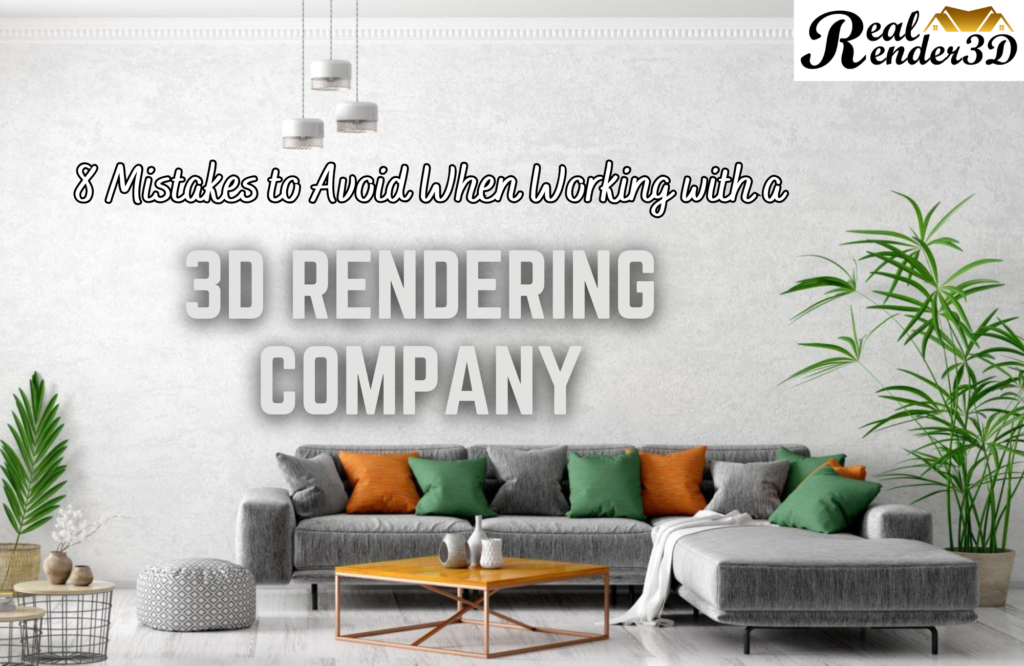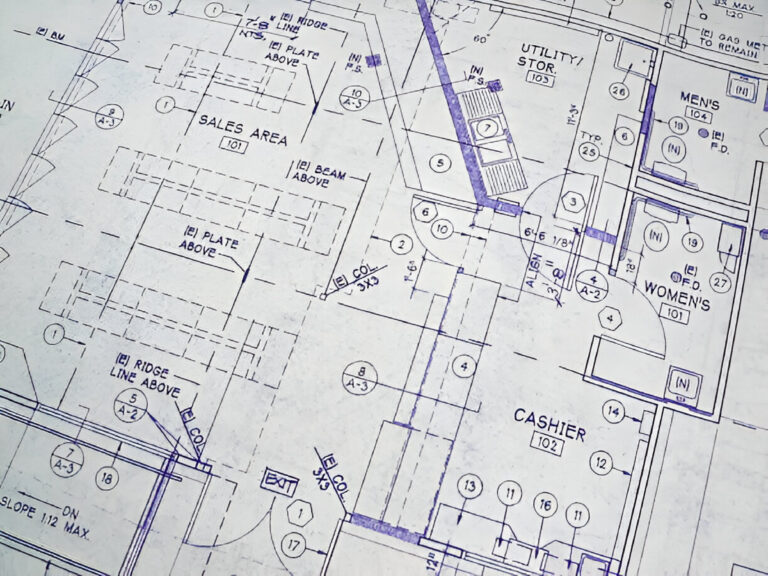Introduction
Working with a 3D rendering company can take your project to the next level through stunning visualizations. However, there are some common mistakes that people make when engaging a 3D rendering partner. Avoid these missteps, and your experience will be smooth, successful and highly rewarding.
Not Providing Enough Details and Direction
One of the biggest mistakes is not providing the 3D rendering company with enough information and direction upfront. Make sure to give them very specific details about colors, textures, styles, views, lighting and concepts that you want depicted. Give them photos, samples, plans and as much visual reference as possible. Having a clear creative brief ensures the 3D renders will match your vision.
Expecting Instant Turnarounds

Quality 3D architectural visualization and rendering takes time. Depending on the project’s scope and complexity, it can take days or weeks. Rushing the process often leads to disappointment with the end product. Be realistic about timelines, and keep an open line of communication with your vendor. Setting clear expectations upfront prevents frustrations about turnaround time.
Not Asking About Additional Services
Beyond 3D rendering, many companies offer complementary services that add value. This includes 3D animation, VR tours, digital staging, graphic design, marketing materials and more. Don’t assume the scope of work – ask your vendor directly about what else they can provide. Taking advantage of add-ons streamlines your experience.
Not Comparing Multiple Bids
Do not simply go with the first 3D rendering company you find. Compare several bids to find the best combination of experience, capability, responsiveness and pricing. Ask each provider about their specific approach. Go with the team that understands your business objectives for the renders and brings creative ideas to the table.
Focusing on Cost Alone
A 3D rendering company that offers rock-bottom pricing may not deliver the best results. Of course cost is important, but pay close attention to the 3D rendering portfolios, client reviews and interactions with your prospective partner. Prioritize value over bargain hunting. A balance of quality and fair pricing is ideal.
Not Checking References and Reviews

Any reputable 3D rendering firm will gladly provide client references and testimonials. Do your homework by checking reviews on Google, Facebook and industry sites. Reach out to past clients to ask direct questions about their experience. You’ll gain great insights that help avoid choosing the wrong partner.
Skipping Contracts and Agreements
Always secure your project through an official contract or letter of agreement. This protects both you and the vendor, ensuring alignment about scope, rates, timelines, deliverables, confidentiality, usage rights and other terms. Legal documentation gives you recourse if the engagement goes sideways. Don’t leave things to a verbal handshake alone.
Not Asking About Revisions
Understand upfront how many rounds of revisions or tweaks are included. Some companies provide unlimited edits, while others limit revisions or charge for extras. Define this early to prevent surprise add-on costs down the road. Being clear about revision policies ensures the finished visuals perfectly match your needs.
By avoiding these common mistakes, you can have an amazing experience with a 3D rendering company. Do your homework to pick the right partner, provide excellent direction, set realistic expectations, maximize available services and protect the engagement through contracts. Your resulting 3D visualizations will be phenomenal assets for your business or project when you work collaboratively with the right provider.
Set Clear Expectations Upfront
Be very detailed about what you want to see in the 3D renders. Provide concept drawings, photos, color swatches – anything that gives specific visualization on your goals. Guide the process through a well-defined creative brief. Follow up with calls or emails if anything needs clarification. Setting clear expectations from day one prevents revisions and do-overs later.
Research and Compare Multiple Providers

Do not simply choose the first 3D rendering company you come across. Take time to research several firms, view online portfolios and get bids. Compare not just on cost, but level of experience, communication style, capabilities and responsiveness as well. Find the balance of quality and budget that aligns with your needs. The lowest rate does not always deliver the best ROI.
Allow Sufficient Time Based on Scope
Understand that proper 3D rendering and visualization takes time, depending on complexity. A basic static interior or product rendering may only take a few days. An animated video walkthrough for a large construction project could take weeks. If you want the highest quality work, be realistic about turnaround times. Rushing will only lead to disappointment.
Request Client References and Testimonials
Any reputable 3D rendering firm will gladly provide references. Take time to reach out to past clients about their experiences. Check online reviews as well, on Google, Facebook, Yelp and industry sites. This provides insights into their work quality, communication, timeliness and other important factors to consider. Always do your due diligence.
Prioritize Portfolios Over Pricing
Certainly cost is a factor, but it should not be the only driver. Prioritize the skill demonstrated in the 3D rendering company’s online portfolio examples. Also consider the experience level of their team. This shows you the quality and creativity they can deliver for your project. Value should outweigh bargain hunting.
Clarify Editing and Revision Terms

Before finalizing your agreement, be very clear on how many rounds of revisions or tweaks are included. Some companies provide unlimited edits, while others limit changes or charge for extras. Defining this upfront prevents surprise add-ons down the road. You’ll know exactly what’s covered for fine-tuning the renders.
Formalize the Engagement Through Contracts
Never proceed solely on a verbal agreement for a 3D rendering project. Always secure the scope, timeline and terms through an official contract or letter of agreement. This protects both parties and provides recourse if expectations are not met. You don’t want to risk misunderstandings based on a handshake deal alone.
Ask About Additional Complementary Services
Most 3D visualization companies offer related services beyond rendering alone. This includes 3D animation, VR home tours, digital staging, floorplans, CAD, BIM and graphic design. Take advantage of these add-ons under one fixed contract, rather than engaging multiple separate vendors.
By avoiding the mistakes above, you will be well on your way to a smooth and successful collaboration with a 3D rendering partner. Do thorough research, pick the right provider for your needs, set clear expectations, manage timelines realistically, formalize details through agreements and leverage additional services. The resulting visualizations will impress!
Final Thoughts
Engaging a 3D rendering company offers tremendous benefits if done right. Following a strategic process will lead to visuals that maximize your project’s success. Do not cut corners or rush the evaluation and selection steps. Invest time upfront to clarify details and find the right partner for your needs.
Protect the engagement through formal contracts. Set realistic time expectations based on the complexity involved. Take advantage of additional services beyond rendering alone for full value. Checking reviews and testimonials provides insights as well. With proper diligence and communication, your 3D rendered assets will deliver impressive visual storytelling and results!
Frequently Asked Questions
1. How much direction should I provide the 3D rendering company?
Provide as much detail as possible – colors, textures, lighting, camera angles, styles. Give ample reference images and drawings to communicate your vision. The more direction upfront, the better the end result.
2. What is a reasonable timeline to expect for a 3D rendering project?
It depends on the complexity, but most projects require at least 1-2 weeks. Larger projects with animation can take 4+ weeks. Avoid unrealistic expectations around quick turnarounds to ensure the best quality.
3. Should I ask for references or reviews before hiring a provider?
Yes, absolutely. Reputable firms will gladly provide client references and testimonials. Check online reviews as well. This provides transparency into their reputation and work quality.
4. How many 3D rendering bids should I get before deciding?
Compare bids and portfolios from at least 3-5 providers. Look beyond cost to evaluate experience, work quality and responsiveness as well.
5. Is it okay to negotiate on price with a 3D rendering firm?
Yes, it is reasonable to negotiate respectfully, especially if the bid is out of your budget range. Many firms are open to a discussion to earn your business.
6. Should I get a formal contract for a rendering project?
Always secure the agreement in an official service contract. This protects both you and the vendor in case of disputes or issues.
7. Can I make unlimited changes and edits to the renderings?
Not always. Clarify the revision policy upfront. Some firms limit revisions or charge for extensive changes.
8. What other services should I ask about beyond 3D rendering?
Inquire about complementary services like animation, VR, digital staging, graphic design, etc. This streamlines working with one provider.










